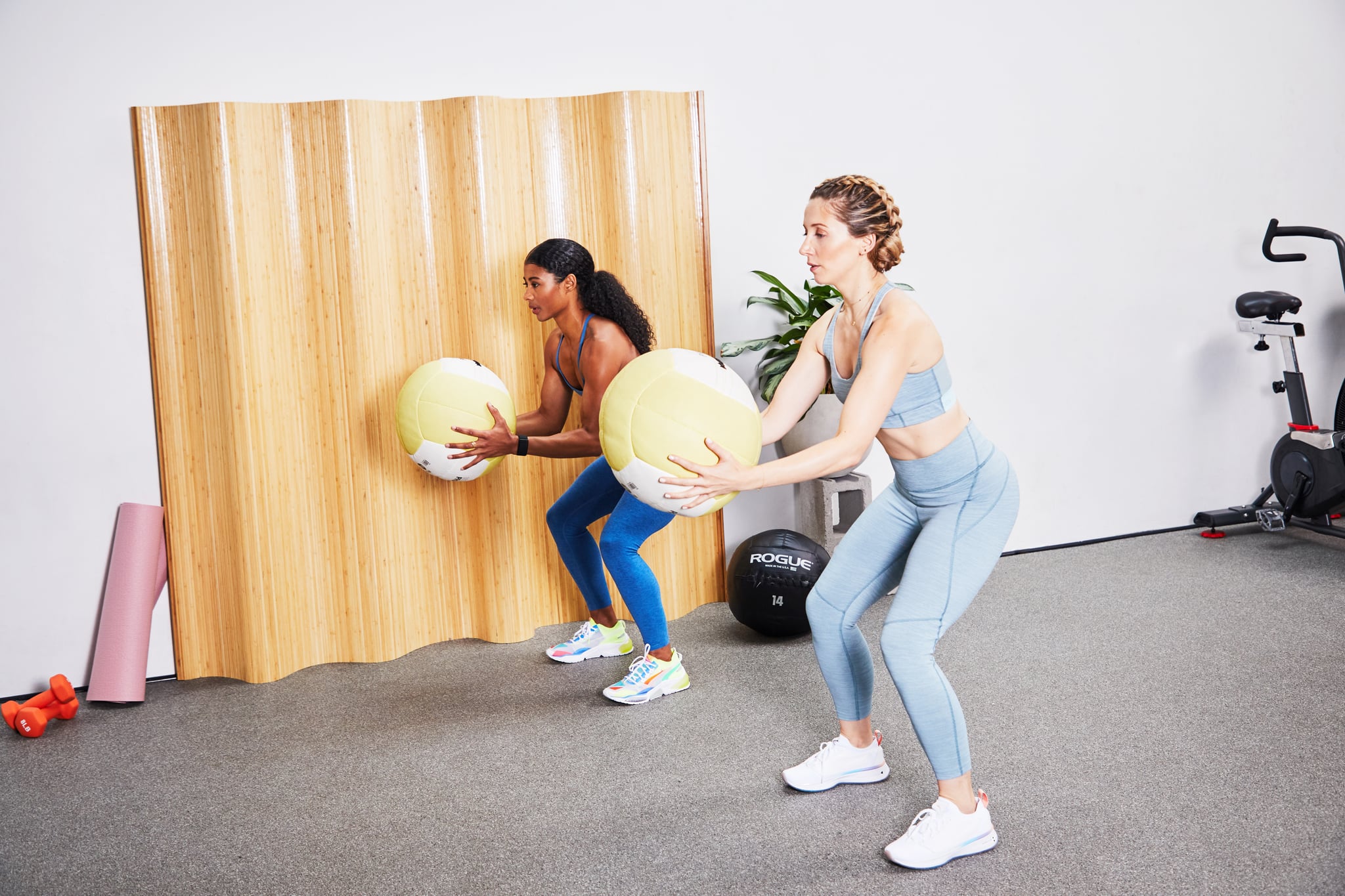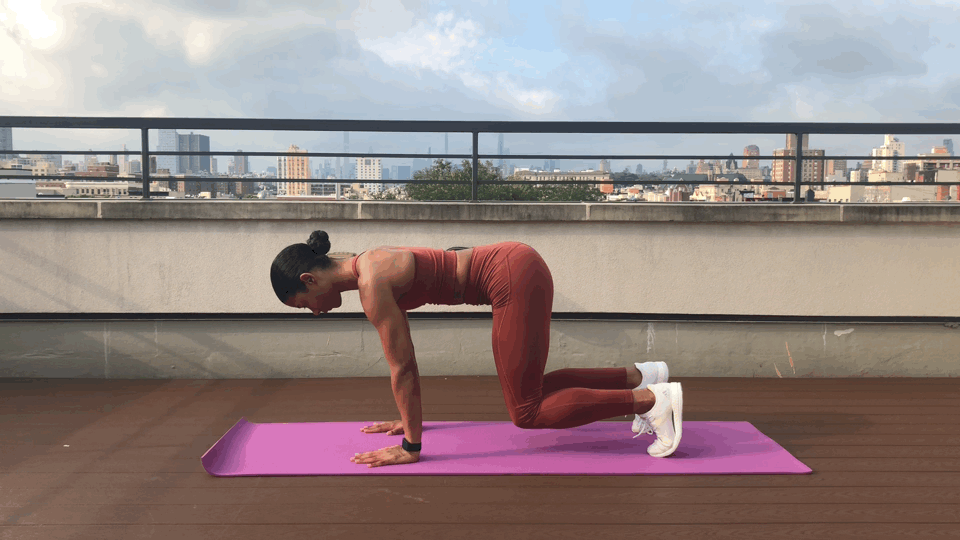
When you’re first dipping your toes into fitness, it’s easy to focus your training on the muscles you can spot in the mirror and accidentally overlook the ones you can’t view in your reflection — and that includes the muscles deep within your core.
ICYDK, your core is the group of muscles located throughout your midsection that assists in creating movements such as bending, straightening, and rotating your torso, and transferring force between your upper and lower body. Along with well-known abdominal muscles such as the rectus abdominis (the “six-pack” abs muscles) and the internal and external obliques, your core also includes the diaphragm (which helps you breathe), back muscles erector spinae and lumbar multifidus, and hip flexors quadratus lumborum and iliac psoas, according to the International Journal of Environmental Research and Public Health.
Finally, there’s the transverse abdominis. This hidden abdominal muscle is essential for maintaining posture and reducing injury risk, but it may not be targeted in your workout routine. Ahead, a strength training expert explains why the transverse abdominis muscle is so important and how to effectively train it with a few key transverse abdominis exercises — without needing to overhaul your fitness program.
What Is the Transverse Abdominis Muscle?
First things first, a quick anatomy lesson. The transverse abdominis is one of the four abdominal muscles, says Alyssa Parten, PhD(c), MS, CSCS, a NSCA-certified personal trainer, strength and conditioning specialist, and powerlifting coach. That list of muscles includes:
Rectus abdominis: The most well-known abs muscle, the rectus abdominis sits vertically in the center of your abdomen and plays a role in flexion of the spine (think: crunching), Parten tells POPSUGAR.
External and internal obliques: The external and internal obliques help with lateral bending and twisting movements and run diagonally from the sides of your abdomen, she adds. The external muscles originate from the upper portion of your ribcage and insert into your pelvis, while the internal muscles stem from your pelvis and connect to your lower ribs and linea alba (the connective tissue that runs from the sternum to the public bone).
Transverse abdominis: Meanwhile, the transverse abdominis lies deep beneath those other abdominal muscles, and wraps around your entire abdomen like a corset, Parten says. “While you can actually feel your rectus abdominis and your external and internal obliques with your hands, you can’t palpate [i.e. touch] your transverse abdominis because of how deep it is,” she adds. Its main function is to compress the abdomen and, in turn, provide stability to the spine and pelvis, Parten says.
To “find” your transverse abdominis and feel it in action, all it takes is a simple drill to engage this core muscle. You’ll need to forcefully exhale: Breathe out of your mouth as hard as possible, blowing as much air as you can, she notes.
Why Your Transverse Abdominis Is So Important
You may not be able to see any visual changes from training your transverse abdominis, but doing so will help you build muscular endurance, Parten says. Simply put, muscular endurance is a muscle’s ability to produce and maintain a particular level of force for a long duration, according to the National Academy of Sports Medicine (NASM).
Your core muscles, in particular, need high levels of endurance to help you maintain an upright posture all day every day, Parten says. And the spinal stability provided by the transverse abdominis will help support your posture and keep you standing when you quickly change your position (say, jumping to the side to avoid stepping in a puddle) or resist a force (e.g. a bar patron who bumps into you), she adds.
Consistently training your transverse abdominis can also help keep you pain-free, as the spine and pelvis are particularly susceptible to injury, Parten says. “A lot of the time, injuries are going to come from joints that are more mobile,” she explains. “Your spine, specifically your middle back, and your hips are mobile regions. Being able to stabilize any movements that use those joints are going to help you mitigate [your risk of] injury.”
Research also suggests that your transverse abdominis may play a role in back pain: Reduced transverse abdominis engagement has been linked to the development and progression of low back pain, and training the muscle may help relieve symptoms, according to the Journal of Exercise Rehabilitation.
How to Train Your Transverse Abdominis
Training your transverse abdominis doesn’t have to be complicated. Since the simple act of a forceful exhale engages the muscle, you can easily train it throughout your usual strength workout. “You can engage your transverse abdominis doing just about anything,” Parten says.
Consider a round of squats, Parten says. Before you perform your first rep, breathe out through your mouth as hard as you can — you should feel the transverse abdominis engage. Then, inhale through your nose, which ensures your abdominals remain activated, as you lower down into your squat. (Inhaling through your mouth will make it more challenging to maintain that abdominal bracing.) As you drive through your feet to return to standing, forcefully breathe out through your mouth, she suggests. You can repeat the process with your remaining reps and with other compound movements, such as deadlifts and bench presses, she adds. Just remember to exhale before you start your first rep, inhale through your nose during the eccentric portion of the movement (usually when you’re lowering your body or a weight), and exhale through your mouth during the concentric portion.
You can also practice core exercises that zero in on the muscle group. Opt for movements that involve isometric contractions — meaning your muscles are contracting but not actively moving (think: holding a plank) — as they enhance stability, according to NASM. “Whenever you do an abdominal movement that’s more isometric, you can exhale through your mouth, inhale through your nose, and hold that engagement” to build endurance, Parten says. “That will be a good transverse abdominis exercise.” FTR, core exercises that involve forward or lateral flexion of the spine will more heavily target your rectus abdominis and obliques, respectively, she says.

3 Transverse Abdominis Exercises to Master
Ready to give your this muscle the training it deserves? Mix these three transverse abdominis exercises into your next workout.
Dead Bug
The dead bug is Parten’s favorite transverse abdominis exercise: “Getting used to holding that trunk position while you’re moving your limbs is going to be super effective in improving the stability of your back and your hips,” she notes. While you can incorporate dead bugs into a dedicated abs workout, Parten prefers to use them as a workout warm-up. “Whenever you do a lot of sitting, you lose a lot of the stability of your lumbopelvic region — your low back and your pelvis — which is where your transverse abdominis wraps around,” she explains. Doing dead bugs before other moves, like squats, for example, helps you “maintain control of that region,” she says, and keeps you moving optimally during your workout.
Here’s how to do the dead bug exercise:
- Lie on your back with your legs and arms raised in a reverse table-top position: arms are extended toward the ceiling, with your hands in line with your shoulders, and your knees are bent at 90-degree angles and stacked above your hips. Flex your feet so your toes point toward the ceiling and your shins are parallel to the floor.
- Engage your core by forcefully exhaling through your mouth. Keeping your lower back glued to the floor, inhale through your nose and slowly lower your right arm to the floor behind your head while simultaneously straightening your left leg and lowering it to the floor. Continue lowering until your lower back begins to arch or your right hand and left heel touch the floor.
- Exhale through your mouth and lift your right arm and left leg back to the starting position. Repeat on the opposite side. That’s one rep.
- Try doing 2-3 sets of 8-12 reps.
Hollow-Body Hold
The hollow-body hold is similar to the dead bug, but it’s much less dynamic. You lower both your arms and legs as close to the floor as possible, then hold your body in this banana-shaped position to test and increase your muscular endurance.
Here’s how to do a hollow-body hold:
- Lie on your back with your legs and arms raised in a reverse table-top position: arms are extended toward the ceiling, with your hands in line with your shoulders, and your knees are bent at 90-degree angles and stacked above your hips. Flex your feet so your toes point toward the ceiling and your shins are parallel to the floor.
- Engage your core by forcefully exhaling through your mouth. Keeping your lower back glued to the floor, inhale through your nose and slowly lower both of your arms to the floor above your head and extend your legs to lower your heels toward the floor. Continue lowering until your lower back begins to arch or your biceps are in line with your ears and your feet are lifted just a few inches off the floor. Your body should be slightly curved, like a banana. If that’s too challenging or you notice your lower back is lifting off the floor, keep your legs raised higher toward the ceiling (e.g. about a 45-degree angle).
- Hold this position, continuing to breathe in through the nose and out through the mouth. Try 2-3 sets of 20- to 60-second holds.
Bear Plank
This transverse abdominis exercise (shown in the image above) has the same starting position as a dead bug, only you’ll be facing the floor and supporting your body with your hands and toes. Remember to maintain a neutral spine and continue breathing as you hold your plank.
Here’s how to do a bear plank:
- Start in a table-top position on the floor with your knees bent at 90-degree angles and directly under your hips, your wrists directly under your shoulders, and your toes resting on the floor. Gaze down and slightly forward to maintain a neutral neck.
- Engage your core by forcefully exhaling through your mouth, then press through your palms to lift your knees a few inches off the floor, maintaining a flat back.
- Hold this position, continuing to breathe in through the nose and out through the mouth. Try 2-3 sets of 20- to 60-second holds.
Image Source: POPSUGAR Photography / Matthew Kelly; Tamara Pridgett
